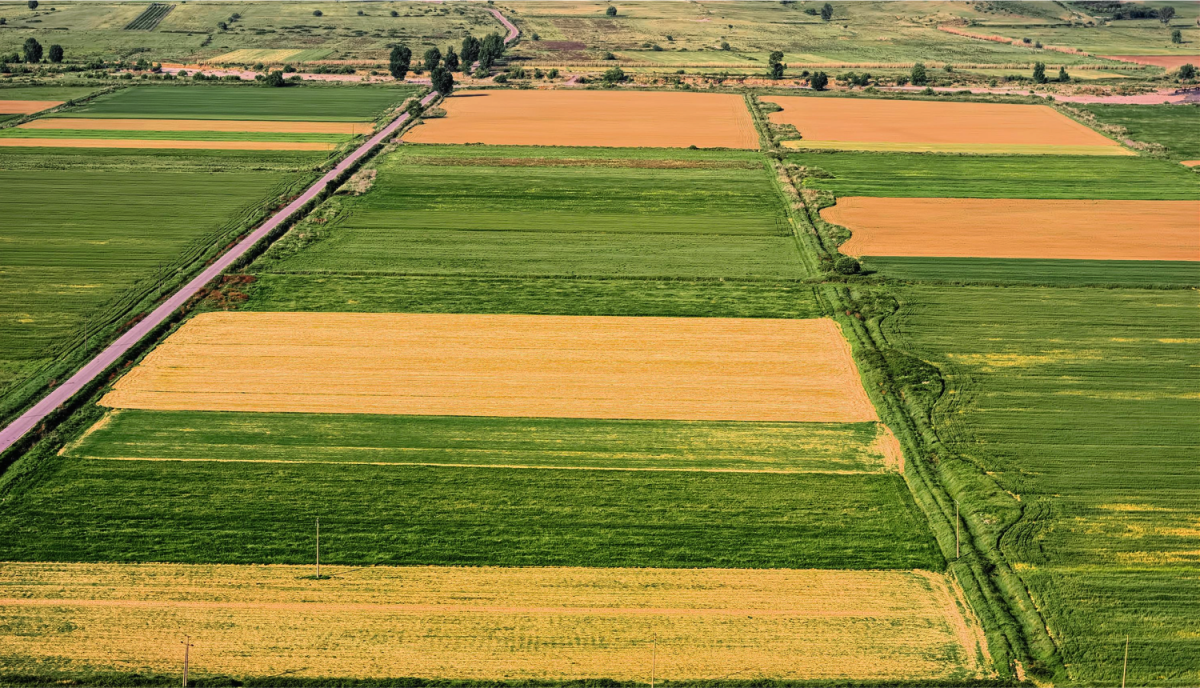March 9, 2020
By Michelle Pelletier Marshall, GAI Media
The global food and agriculture sector is a multi-trillion dollar industry with responsibility to feed an expected global population of 11 billion people by the turn of the century. To address the challenges of producing increasing quantities of food and feed in the face of decreasing availability of arable land, shrinking water sources, and increasing weather volatility, the sector has developed an insatiable appetite for capital to fuel solutions.
To date, there has been no comprehensive analysis of capital flows into the global food and agriculture (F&A) sector. That will change with the release of the Global AgInvesting Rankings & Trends Report 2019 within the next few weeks, and the presentation of the report’s findings at the 12th annual Global AgInvesting (GAI) conference in New York. This report highlights nearly 700 organizations that are investing in F&A globally in a sector that combined had over $131 billion in Assets Under Management (AUM) in 2019.
Initiated by the Global AgInvesting team, which includes Kate Westfall, COO, and Jared Rose, Managing Director, and supported by company CEO Greg Mellinger, the project was undertaken to provide a confirmed measurement of the AUM in the sector and the potential for growth to serve as a benchmark for the GAI audience. Based on more than a decade of expertise in the sector and relationships built within the global F&A community, GAI recognized that agriculture investment stakeholders were seeking to better understand:
— Investment strategies and operating models used to deploy capital;
— Volume of capital (AUM) being deployed in the sector globally;
— Geographic focus of investment activity; and
— Allocations being made by institutional investors to the sector.
HighQuest Partners, LLC, the parent company of Global AgInvesting, utilized its strategy advisory arm to begin a thorough investigation of more than 1,200 organizations, which were distilled to a list of 698 active ag investors. These included asset managers, sovereign wealth funds, agribusinesses, Development Finance Institutions (DFIs), family offices (investing directly), and pension funds (investing directly), technology accelerators, and government and trade associations.
While several reports and white papers published over the last decade have estimated global AUM in the F&A sector, none were based on a methodical canvassing of organizations active in the sector, with the exception of farmland (real asset) investing. It is also worth noting that none have estimated the amount of AUM invested in the sector, or the number of organizations pursuing private equity, credit/debt, venture capital, or impact investment strategies. Given the lack of data available on the sector, GAI made the commitment to collect and aggregate data with the objective of publishing the first comprehensive analysis of capital flows into the global F&A asset class, resulting in the Global AgInvesting Rankings & Trends Report 2019.
GAI Gazette sat down with Philippe de Lapérouse, one of the two authors of the report from HighQuest’s advisory practice who co-authored the report with colleague Mark Zavodnyik, to get an overview of the report.
1). The detailed research found that AUM in the global F&A sector exceeded $131 billion in 2019. What is the significance of this, and the potential for growth?
Given that previous estimates of AUM in the sector were substantially below this amount, we expect that organizations raising capital to deploy in the sector, investors allocating to the sector, and the general financial industry will be surprised by the amount of AUM in play in F&A.
We also expect that this level of AUM will elicit an increase in media coverage from both general financial media and industry media, which will heighten overall awareness among investors and the general public of the opportunities to invest in F&A.
We would also expect trade associations and governmental bodies around the world to take notice of this trend and recognize the opportunity this provides to promote more investment in the sector to address concerns over food security, as well as support the pursuit of social and economic development goals.
2). Can you provide a brief overview of your research methodology and the contents of the report?
The focus of this report is capital being raised/deployed by “ag investors” including:
— Asset Managers
— Agribusinesses
— Development Finance Institutions
— Sovereign Wealth Funds
— Technology Accelerators
— Family Offices (Investing Directly)
— Pension Funds (Investing Directly), and
— Governments & Trade Associations.
This inaugural report does not address investors including LPs, pension funds (not investing directly in F&A), university endowments, insurance companies, family offices (not investing directly in F&A), and high-net-worth individuals allocating capital to asset managers for investment into the sector.
After a preliminary canvassing, we researched more than 1,200 organizations at a high level to eliminate those clearly not investing in F&A. This resulted in a list of 900 organizations that were subjected to a far more rigorous review to confirm their fundraising and investing activity in F&A. We used a wide range of resources to collect information on these organizations, culling an additional 200 to arrive at 698 ag investors.
We recognize that this endeavor is a continual work-in-progress and that the effort to track capital flows into F&A will continue to require ongoing updates and additions. Nevertheless, we are confident that in this inaugural report we have represented a majority of ag investors active in the sector globally.
3). What challenges did you face in aggregating this data that surprised you?
A key issue that we had to wrestle with at the outset was developing a taxonomy for identifying or characterizing the type of ag investors and the investment approaches they were pursuing to raise and deploy capital in F&A. There is a wide range of organizations active in this sector and the business models used to raise and deploy capital continue to evolve. The challenge we faced was to develop a classification system that was flexible enough to capture all the nuances of the sector, and yet enabled us to analyze the data in a manner that was useful for the industry.
4). Investing in farmland (or real assets) came out at the top investment strategy globally at $51.5 billion, or 40 percent of the global ag AUM. Can you please explain more about the top investing activities and their future investing opportunity?
The other major investment strategies that ag investors are pursuing include private equity in operating companies active across the supply chain, credit/debt financing of producers and companies active in the sector, venture capital financing of early stage food and ag tech companies, and impact investing in emerging economies to promote sustainable social and economic development.
These investment strategies are providing capital to a wide range of activities in F&A, including inputs, row crops, permanent crops, specialty crops, organic crops, animal protein production, aquaculture, logistics, food processing, and consumer food products, etc.
5). Funding of early stage agtech has experienced substantial growth over the past five years with the average agtech capital raised doubling from $7.7 million in 2014 to $13.1 million in 2018, according to a story in our sister publication, GAI News. What did your research indicate for potential in this game-changing segment?
Novel approaches for protein production, including organic meats, farmed aquaculture production, vegetable protein meat substitutes and cultured meat are attracting investments from venture capital firms that are in many cases making their first allocation to the F&A sector. This is opening up new sources of capital flow into F&A that did not exist as recently as five years ago.
We expect the level of investment in the F&A sector by venture capital firms seeking opportunities to leverage technologies from adjacent industries such as AI, robotics, genomics, and biochemistry will continue to increase.
6). Meeting sustainability objectives and Environmental, Social and Governance (ESG) goals are now at the top of the list when evaluating investment opportunities in F&A. How has this trend played out in the organizations you evaluated, and what type of opportunities for this type of impact investing lie ahead?
A majority of ag investors are incorporating ESG goals as an integral part of their strategy and investment mandate, as well as requiring these objectives by their portfolio companies. In fact, a focus on sustainability and addressing climate change has become a core strategy of a majority, if not all, asset managers focused on investing in F&A.
The agriculture industry’s role in feeding a growing global population provides attractive opportunities for investors seeking to meet their sustainability objectives and ESG goals. This trend will continue attracting capital to the sector, particularly from family offices investing directly or as LPs in funds.
7). What regions around the globe show the most potential for investment, and in what ag activities?
There are opportunities for pursuing all investment strategies across all regions. While early stage investing in food and agtech is particularly active in North America, there also are interesting opportunities for venture capital investing in Europe and Asia. Similarly, demographic trends, rising per capita GDP, and increasing urbanization in Africa are creating opportunities for private equity and impact investing on that continent.
It should also be pointed out that the F&A sector provides tremendous opportunities for transferring technology to achieve attractive returns in emerging markets. In addition, there are opportunities to leverage technologies developed in adjacent industries such as AI, robotics, and gene editing at a far greater adoption rate than has been the case in the past due to social media. The F&A sector offers endless opportunities for being creative.
8). What is a key trend that you identified from your analysis that you did not expect at the outset of undertaking your research?
We were surprised to discover that a growing number of asset managers are pursuing a multi-strategy approach for deploying capital within a fund or across all the funds they manage. This is particularly noticeable regarding farmland asset managers who allocate a small percentage (referred to as a “sleeve”) of the fund(s) they manage to pursue a private equity or venture capital strategy. (Eighteen of the 25 largest asset managers pursuing a multi-strategy investment approach have a primary focus on farmland investing.) The rationale is to gain access to technologies that will improve returns on their farmland holdings by informing where to acquire farmland, which crops and activities to invest in, and how to improve crop yields and mitigate risk under increasingly challenging growing conditions (due to volatile weather and water constraints).
9). What are your long-term objectives for this report?
Our intention is to make this an annual report that will be released prior to our Global AgInvesting conference in New York each year. The report will be updated on an annual basis to reflect changes in capital flows into the F&A sector. We believe that organizations raising and deploying capital into F&A, as well as investors allocating capital to funds, will recognize the value that this report provides to the industry, and will help to enhance the accuracy of the report’s findings by taking an active role in validating the information we are collecting on investment activity.
10). When will the report be available and how does one get a copy of it?
The report will be released within the next few weeks via download from our website at globalaginvesting.com/2019report/, and the findings will be presented at the Global AgInvesting conference in New York. For parties interested in obtaining a more detailed analysis of the findings beyond the ranking tables and analysis based on aggregated data presented in the report, we would be delighted to discuss how we can provide this information on a customized basis.
ABOUT THE REPORT AUTHORS
 Philippe de Lapérouse is a Managing Director at HighQuest Partners. He has more than 30 years of senior level experience working with leading global companies in the agro-industrial and value-added food chain, including Ralston Purina and Bunge, as well as working as an investment banker at the beginning of his career. At HighQuest Partners, he has led over 100 engagements advising executive teams and institutional investors operating and investing globally across the food, biotech, and bioenergy value chains on making informed decisions regarding resource allocation, new business opportunities and developing investment strategies to address the challenges facing global agriculture. Lapérouse can be reached in St. Louis at +1.314.994.3282 or via email at pdelaperouse@highquestpartners.com.
Philippe de Lapérouse is a Managing Director at HighQuest Partners. He has more than 30 years of senior level experience working with leading global companies in the agro-industrial and value-added food chain, including Ralston Purina and Bunge, as well as working as an investment banker at the beginning of his career. At HighQuest Partners, he has led over 100 engagements advising executive teams and institutional investors operating and investing globally across the food, biotech, and bioenergy value chains on making informed decisions regarding resource allocation, new business opportunities and developing investment strategies to address the challenges facing global agriculture. Lapérouse can be reached in St. Louis at +1.314.994.3282 or via email at pdelaperouse@highquestpartners.com.
 Mark Zavodnyik is a Project Manager at HighQuest Partners. Prior to this, he was the lead Tropical Oils Trader at AAK USA with responsibility for all palm, palm kernel, and coconut oil sourcing, trading, and risk management for AAK facilities in the U.S. In this role, Zavodnyik also was responsible for conducting due diligence analysis of the raw material sourcing and risk management function of potential acquisition targets. An accomplished speaker on the supply/demand factors impacting tropical oil markets, as well as the efforts the industry has undertaken to make palm oil more environmentally sustainable, Zavodnyik holds a Bachelor of Arts from the University of Notre Dame. He can be reached at +1.574.274.3099 or via email at mzavodnyik@highquestpartners.com.
Mark Zavodnyik is a Project Manager at HighQuest Partners. Prior to this, he was the lead Tropical Oils Trader at AAK USA with responsibility for all palm, palm kernel, and coconut oil sourcing, trading, and risk management for AAK facilities in the U.S. In this role, Zavodnyik also was responsible for conducting due diligence analysis of the raw material sourcing and risk management function of potential acquisition targets. An accomplished speaker on the supply/demand factors impacting tropical oil markets, as well as the efforts the industry has undertaken to make palm oil more environmentally sustainable, Zavodnyik holds a Bachelor of Arts from the University of Notre Dame. He can be reached at +1.574.274.3099 or via email at mzavodnyik@highquestpartners.com.
~ Michelle Pelletier Marshall is managing editor for Global AgInvesting’s quarterly GAI Gazette magazine and a contributor to GAI News. She can be reached at mmarshall@globalaginvesting.com.

Let GAI News inform your engagement in the agriculture sector.
GAI News provides crucial and timely news and insight to help you stay ahead of critical agricultural trends through free delivery of two weekly newsletters, Ag Investing Weekly and AgTech Intel.




